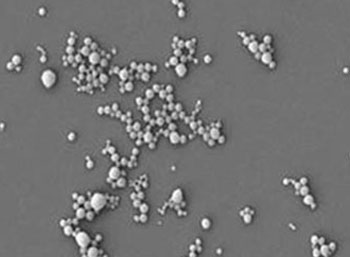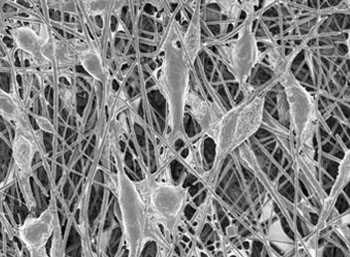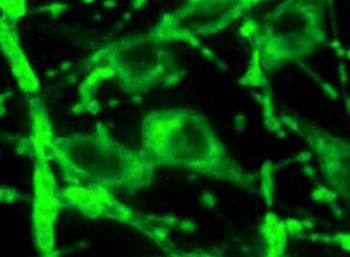


Biomaterials
Biomaterials could be a material, natural or synthetic, which is used for medical application that interacts with the biological systems. Biomaterials have tremendous impact on human health care. As per American National Institute of Health (NIH), biomaterials are, “any substance or combination of substances, other than drugs, synthetic or natural in origin, which can be used for any period of time, which augments or replaces partially or totally any tissue, organ or function of the body, in order to maintain or improve the quality of life of the individual’’.Biomaterial science is a multidisciplinary field that includes the likes of medicine, biology, chemistry, tissue engineering and material science.A biomaterial could be a metal, ceramic, polymer or composites. There are loads of different biomaterial devices synthesized annually and available across the globe for use.Fig.1 illustrates the applications of biomaterials. In the past five decades of existence, biomaterial science has gained a lot of attention and lot of input for the development of new products through extensive research has been achieved.
 |
Fig 1: Applications of Biomaterials |
We are more into the polymeric biomaterials that have been widely employed for the fabrication of medical devices and tissue engineering scaffolds. Biomaterials have a major role in the tissue-engineering arena that provides the synthetic frameworks in the form of scaffolds, matrices or constructs. Their importance has increased drastically in the development of drug delivery systems and tissue engineering approaches. Different polymers can be used to create drug delivery vehicles that are capable of providing sustained delivery of potential therapeutic agents (proteins, growth factors, drugs etc.)and electrospun scaffolds that can be used in wound healing and cosmetic applications. Modified surface characteristics of drug-loaded nanoparticles allow specific binding to cellular receptors in the targeted organ. We have synthesized several polymeric nanoparticles for drug delivery applications. Fig 2. shows SEM image the polymeric nanoparticle. We have also made electrospun scaffolds using different biomaterials for different applications that include tissue engineering, wound healing, cosmetic etc. Electrospinning has been a very efficient technique, which is employed to produce polymeric scaffolds andthe resulting nanofibers have wide range of applications due to the unique properties exhibited. These nanofibers have controlled morphology, porosity and composition. Fig. 3& 4 shows the SEM image of the electrospun nanofibers and Fig 5 shows the confocal images of nanofibers. The recent advances in the field of biomaterial science along with nanotechnology promises an array of new products, whilst discovering an ideal biomaterial still remains a challenge.
 |  |
Fig 2: SEM image of PLGA polymeric nanoparticles | Fig 3: SEM image electrospun nanofibers. |
 |  |
Fig 4: SEM image of fibroblast cells on electrospun nanofibers. | Fig 5: Confocal image of fibroblast cells on electrospun nanofibers. |
Selected publications
- Biomimetic smart nanocomposite: Quantum dot encapsulated zein electrospun fluorescent nanofiber. Brahatheeswaran D, Aby C P, Y Nagaoka, T Hasumura, Y Yoshida, T Maekawa, D S Kumar. Biofabrication, 2012; 7, 045001, DOI:10.1088/1758 - 5082/4/2/025008.
-
Hybrid fluorescent curcumin loaded zein electrospun nanofibrous scaffold for biomedical applications. Brahatheeswaran D, Anila M, Aswathy RG, Y Nagaoka, Venugopal K, Y Yoshida, T Maekawa, D S Kumar. Biomedical Materials, 2012; 4, 025008, DOI:10.1088/1748 - 6041/7/4/045001.
-
Evaluation of antithrombogenicity and hydrophilicity on Zein - SWCNT electrospun fibrous nanocomposite scaffolds. Brahatheeswaran D, Saino HV, Aswathy RG, Y Yoshida, T Maekawa, D S Kumar. International Journal of Biomaterials, 2012; DOI:10.1155/2012/345029 .
-
Polymeric Scaffolds in Tissue Engineering Application : A Review. Brahatheeswaran D, Y Yoshida, T Maekawa, D S Kumar. International Journal of Polymer Science. 2011; DOI:10.1155/2011/290602, 19 pages.
-
Fabrication and characterization of nanofibrous scaffold developed by electrospinning. Brahatheeswaran D, Y Yoshida, T Maekawa, D S Kumar. Materials Research. 2011; 14(3): 317 - 325. DOI: 10.1590/S1516 – 14392011005000064.
-
Biocompatible fluorescent zein nanoparticles for simultaneous bioimaging and drug delivery application. Aswathy RG, Sivakumar B, Brahatheeswaran D, T Fukuda, Y Yoshida, T Maekawa, D S Kumar. Advances in Natural Sciences:Nano Science and Nanotechnology. 2012; 3, 025006 DOI:10.1088/2043 - 6262/3/2/025006.
-
Multifunctional biocompatible fluorescent carboxymethyl cellulose nanoparticles. Aswathy RG, Sivakumar B, Brahatheeswaran D, Sreejith R, T Ukai , T Fukuda, Y Yoshida, T Maekawa, Kumar DS. Journal of Biomaterials and Nanobiotechnology, 2012; 3, 254, DOI:10.4236/jbnb/2012.322031.
-
Green synthesis, characterization and in vitro biocompatibility of starch capped PbSe nanoparticles. Aswathy RG, Sivakumar B, Brahatheeswaran D, Y Yoshida, T Maekawa, D S Kumar. Advanced Science Letters, 2012 (press).
-
Curcumin Loaded-PLGA Nanoparticles Conjugated with Tet-1 Peptide for Potential Use in Alzheimer’s disease. Anila Mathew, Takahiro Fukuda, Yutaka Nagaoka, Takashi Hasumura, Hisao Morimoto, Yasuhiko Yoshida, Toru Maekawa, KizhikkilotVenugopal, D. Sakthi Kumar. 2012; PLoS ONE 7(3): e32616. doi:10.1371/journal.pone.0032616.
-
Biocompatible fluorescent jelly quantum dots for bioimaging. Aswathy RG, Sivakumar B, Brahatheeswaran D, T Ukai, Y Yoshida, T Maekawa, D S Kumar. Materials Express, 2011; DOI:10.1166/mex.2011.1045.
- Amyloid - binding aptamer conjugated curcumin - PLGA nanoparticle for potential use in Alzheimer's Disease. Anila M, Athulya A, Brahatheeswaran D, T Fukuda, Y Nagaoka, T Hasumura, S Iwai, H Morimoto, Y Yoshida, T Maekawa, K Venugopal, D S Kumar. Bio Nano Science. 2011; DOI 10.1007/s12668 - 012 - 0040 - y.
















